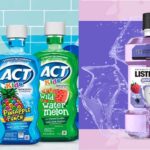Among the many problems of parenting e.g. baby chewing the nipple, him making weird noises while sleeping and her rubbing the back of the neck, one issue is the dirty baby bottle.
Although there’s nothing quite like the magic of those precious baby bottles – those trusty vessels that hold liquid gold, nurturing and nourishing your little one.
But with the joy of motherhood comes the responsibility of keeping these bottles clean and safe.
The journey of maintaining squeaky-clean baby bottles can be quite a puzzle, a source of vexation for many mothers. The ins and outs, the nooks and crannies, and the fear of residue lurking in those hard-to-reach corners can be worrisome.
But what if we told you there’s a simple, natural solution that can come to the rescue? Yes, the vinegar. But how to clean baby bottles with vinegar?
How Vinegar Works To Clean Baby Bottles
Vinegar is not just a versatile kitchen ingredient; it’s also a potent cleaning agent that can effortlessly tackle the challenges of baby bottle maintenance. But how does it work its cleaning magic? The secret lies in vinegar’s natural acidity, which helps dissolve mineral deposits, milk residue, and grime that often accumulate in baby bottles.
Vinegar’s antimicrobial properties make it a formidable opponent against bacteria, ensuring that your baby’s bottles remain hygienic and safe. Additionally, its acidic nature neutralizes odors, leaving the bottles fresh and odor-free.
The best part is that vinegar is a safe and eco-friendly choice, devoid of harmful chemicals. So, you can trust it to provide a thorough clean while safeguarding your baby’s well-being.
Materials Needed To Clean Baby Bottles With Vinegar
Here’s what you require:
- Warm water
- Mild dish soap
- White vinegar
- Baking soda (optional)
- Bottle brush
- Nipple brush
- Boiling pot
Steps To Clean Baby Bottle With Vinegar

Now to the actual process, parents!
Step# 1: Start by disassembling the baby bottle. Remove the bottle nipple, bottle cap, and any other detachable parts.
Step# 2: Rinse the bottle with warm water. This helps remove any loose debris and makes the cleaning process more effective.
Step# 3: Fill the bottle with a mixture of equal parts white vinegar and warm water. If you prefer, you can use a tablespoon of baking soda to create a paste for tougher stains. Let the solution sit for about 20-30 minutes.
Step# 4: Use a bottle brush to scrub the interior of the bottle thoroughly. Ensure you reach all areas, including the bottom and corners. For the nipples and caps, use a specialized nipple brush.
Step# 5: Rinse the bottle, nipple, and other components with warm water to remove any residual vinegar and soap.
Step# 6: Sterilize the baby bottle if desired. You can use a sterilizer or a large pot to boil water and immerse the bottles and components for a few minutes.
Step# 7: After sterilizing, let the baby bottles and parts air dry on a clean, dry rack or surface. Avoid using a towel or cloth to dry them, as this can introduce contaminants.
Important Considerations For The Cleaning Process
While cleaning baby bottles with vinegar is a straightforward process, there are a few important considerations to keep in mind to ensure the safety and effectiveness of the cleaning routine.
- Use Baby-Safe Dish Soap: Opt for a mild, baby-safe dish soap when washing the bottles before applying vinegar. This minimizes the risk of any residue or soap flavor lingering in the bottles.
- Rinse Thoroughly: Be diligent in rinsing the bottles after cleaning with vinegar. Any remaining vinegar or soap residue can affect the taste of your baby’s milk or formula.
- Inspect Bottles Regularly: Over time, baby bottles may show signs of wear and tear, such as cracks or scratches. Inspect them regularly to ensure they remain safe for use.
- Sterilize When Necessary: Sterilization is crucial, especially for newborns or if your baby has been unwell. While vinegar cleans effectively, sterilization provides an extra layer of protection against harmful bacteria.
Bottom line
So this is all about cleaning baby bottles with vinegar. The good thing is that it’s a cost-effective solution and doesn’t contain any chemicals to harm the low immunity of your baby.
Keep coming back to our articles on kids and parenting.
Anna James has two interests – writing and homemaking. And she is proud of both. When being a super mom who groomed her two babies exceptionally well wasn’t enough, she turned to writing.
Why? Because she wanted to tell the world how they can replicate her grooming and be proud moms as well.






